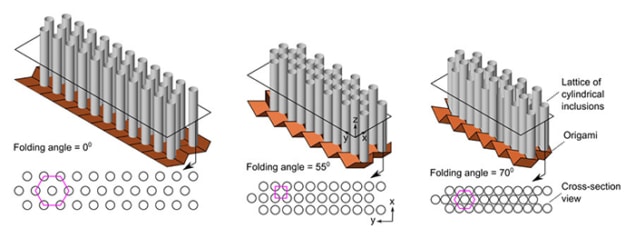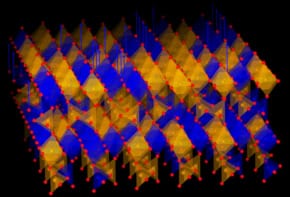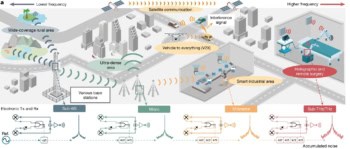
Roadside pillars on an origami-inspired folding base could block traffic noise without restricting a driver’s view. That’s the hope for a new kind of “sonic barrier” proposed by Manoj Thota and Kon-Well Wang at the University of Michigan, Ann Arbor. Their design can switch between configurations to selectively inhibit certain frequencies depending on traffic conditions.
Noise pollution from roads comes from many sources, including engines, exhausts and tyres, but the acoustic spectrum effectively depends on two main factors: the type and speed of the vehicles. Buses, heavy-goods vehicles and any slow-moving traffic produce spectra dominated by low frequencies, while cars and fast-moving vehicles tend to produce high-frequency noise.
A solid wall could block all these components equally well, but this is rarely necessary given that road traffic typically does not produce pure white noise. Optically transparent, periodic sonic barriers exist, but if they are fixed permanently in place, they can be effective only for certain frequencies. By allowing the periodicity to vary dynamically, Thota and Wang aim to produce a barrier that can be tuned to match the dominant frequency as required.
Fold to fit
Central to the idea is the use of a foldable substrate known as a Miura-origami sheet. Certain degrees of folding make the vertices of the sheet align in a square lattice, while a hexagonal lattice pattern results from other folding angles. By placing a vertical pillar at each vertex, the arrangement and spacing of the barrier components can be modified on demand.
The researchers modelled the system with analytical and numerical methods, and discovered two folding angles that maximized sound attenuation at 500 Hz and 1000 Hz, respectively. The results of the simulations were confirmed by a one-seventh-scale physical model using PVC pipes fixed to aluminium facets and polymer folding edges.
As the barrier requires just one-degree of actuation to switch between states, Thota and Wang think it could be a practical alternative to using solid walls or fixed-period structures to block traffic noise. As well as being permeable to wind – and therefore avoiding any of the wind-induced loading suffered by the foundations of walls – the proposed barriers are also better at diffusing sound waves reflected into the road, further reducing roadside noise levels.
The research is published in Journal of Applied Physics.



